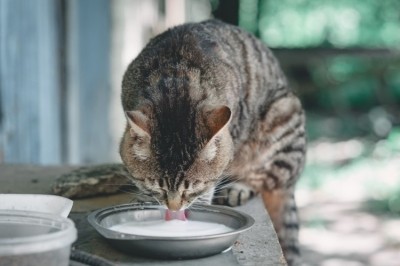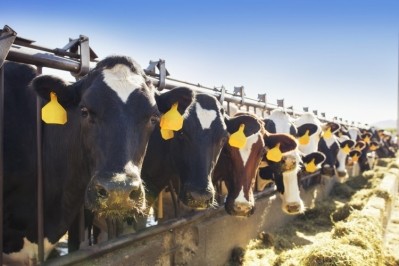USDA orders mandatory bird flu testing for dairy cows

Effective Monday, April 29, all lactating dairy cows in the US will have to be tested and return a negative result for the H5N1 virus prior to being transported across state borders.
In a federal order issued April 24, the US Department of Agriculture along with the Animal and Plant Health Inspection Service (APHIS) said it was necessary to prevent the spread of highly pathogenic avian influenza (HPAI), which has now been detected on 33 dairy cattle premises in 8 states.
A further delay would ‘threaten to hasten the spread of the disease, multiplying the potential harm to livestock, poultry, the dairy industry, and, potentially, human health,’ the federal agencies said.
The requirement comes into effect on Monday, April 29, and will immediately apply to lactating dairy cows that are being moved interstate, with other classes of dairy cattle set to be tested ‘based on scientific factors concerning the virus and its evolving risk profile’.
APHIS will reimburse producers for testing carried out at National Animal Health Laboratory Network (NAHLN) laboratories, with samples from both symptomatic and asymptomatic animals eligible for reimbursement. Detailed guidance is currently being drafted by APHIS and will be published in due course; DairyReporter has reached out to APHIS to find out more, but is yet to receive a response.
- Dairy cows, starting with lactating cows, will be required to test negative for A(H5N1) prior to interstate movement from April 29.
- The testing must be done at an approved NAHLN lab, with APHIS reimbursing producers for their costs.
- Where dairy cattle tests positive, producers will be required to provide additional epidemiological information, including animal movement tracing; more details are set to follow in the official guidance.
- APHIS is expected to issue additional conditions for dairy cattle moving interstate.
The federal order can be read in full here.
Spread from cows to poultry
There is now evidence that the virus strain that affects cows can also transmit back to poultry, the USDA said; 8 poultry premises in 5 states had been infected with the same virus genotype that affects dairy cows.
In addition, HPAI was found in lung tissue sample from an asymptomatic cull dairy cow that originated from an affected herd, raising questions about asymptomatic carriers and the affects this could have on the beef industry.
‘Viral particles’ found in pasteurized milk
The National Milk Producers Federation said the measures were ‘appropriate’, adding: “Dairy farmers stand ready to take a proactive approach to ensuring that we better understand the spread of the virus, do what we can to limit that spread, and ensure the health of our animals and workers.”
The trade body highlighted that USDA, the Food and Drug Administration (FDA) and scientific research have establishes that consumer milk supply is safe since pasteurization renders the H5N1 virus inactive.
But in a recent update, the FDA noted that pasteurization ‘is not expected to remove the presence of viral particles’ from milk. The finding was made during qPCR testing, a type of high-sensitivity test that can detect DNA traces of viruses, including those inactivated during pasteurization.
FDA said it is further assessing ‘any positive findings’ but has so far ‘seen nothing that would change our assessment that the commercial milk supply is safe’. The agency is set to publish multiple studies related to this research in the coming days.
No new infections in people
The Centers for Disease Control and Prevention (CDC) said there have been 'no indicators of unusual influenza activity in people, including avian influenza A(H5N1)'. CDC is looking at multiple flu indicators to monitor for influenza A(H5N1) viruses, including how the virus spreads to or among people.
No human-to-human transmission has been reported so far during the current outbreak, with one case of a cow-to-human transmission recorded in Texas, where a worker at a dairy farm developed eye redness following close contact with an infected animal.













